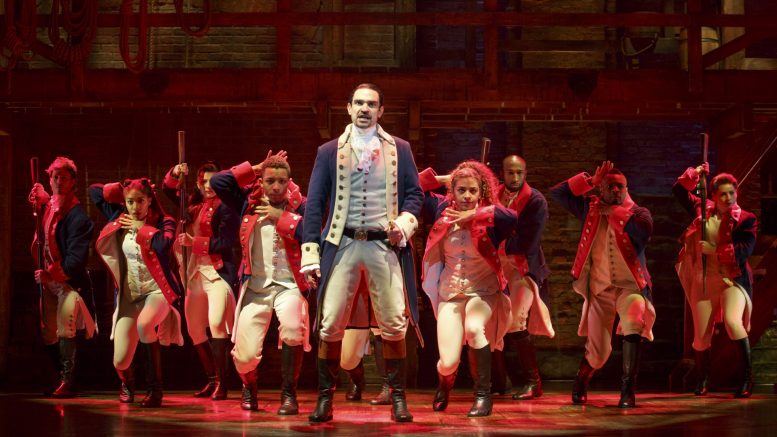A lawsuit brought against the producers of “Hamilton” and the owners of the theater in which it’s playing has turned attention to issues of accessibility for disabled Broadway theatergoers — an often-overlooked subject where real accommodation and good intentions can meet murky questions of demand and execution.
The class action suit filed earlier this month in the Southern District Court of New York alleges “systemic civil rights violations” against blind and visually-impaired theatergoers, an accusation prompted when plaintiff Mark B. Lasser, a blind theatergoer from Denver, Colo., contacted the “Hamilton” box office about audio description services and was told none were available. That violates the Americans with Disabilities Act, according to the suit.
Broadway does have multiple accessibility programs in place, as highlighted by a partnership between the Broadway League, the producers’ trade association, and Theatre Development Fund, the New York nonprofit that also operates the TKTS booth. Wheelchair-friendly seat locations, captioning and sign language interpretation for the hearing impaired, autism-friendly performances, and audio description for the visually impaired are all available. Last year, the League and TDF teamed to launch Theater Access NYC, an online resource for theatergoers looking for performances presented with accessibility services.
But while some services are on-demand and available at any performance — such as wheelchair seats and private iCaption devices — others, like sign-language interpretation and autism-friendly shows, are only available intermittently. Not all productions make all options available, and audio description for the visually impaired, the service that is at the root of the “Hamilton” lawsuit, is among the least-implemented on Broadway.
“Hamilton,” however, isn’t the only show not to offer audio description — not by a long shot. According to the Theater Access NYC website, only four productions over the next 30 days offer audio description: “Aladdin,” “The Book of Mormon,” “The Lion King” and “Wicked.”
Privately, Broadway producers all express the best of intentions: Everyone, after all, wants more people to be able to attend their show. But during the often chaotic, high-pressure months around a production’s opening, accessibility accommodations often fall to the bottom of a long to-do list, and, some producers add, it only makes sense to spend the money on accommodations once it’s clear a show is successful enough to run for a while. It can also be a challenge figuring out which services (like sign language interpretation or “open caption” supertitles) are wanted how often. (Producers for “Hamilton” had no comment on the current litigation.)
The wording of the ADA, which doesn’t get much more specific than requiring “reasonable” accommodations for those with disabilities, can also be something of a gray area, according to some in the industry. Advocates for people with disabilities, of course, refute that: “Twenty percent of the American populace has a disability, and it is incumbent on Broadway shows, Off Broadway shows, regional shows and touring shows to make themselves accessible,” said Howard Sherman, the senior strategy consultant at the Alliance for Inclusion in the Arts. “This is reasonable.”
Relatively speaking, audio description isn’t too costly to implement, according to Mark Annunziato of Sound Associates, the company that specializes in, among other things, devices for translation, assistive listening and audio description. The technology infrastructure for the theater, if it isn’t there already, can be purchased by theater owners for between $20,000 and $30,000, while the production of a pre-recorded audio description track can ring in at about $5,000, give or take, in a process that usually includes re-editing and rerecording when new cast and crew members rotate in. (Another option is audio description done live in real-time, but so far Broadway has favored prerecording.)
Because “Hamilton” isn’t alone in lacking audio description offerings, the singling out of that particular show — the theater industry’s headline-grabbing megasmash — seems strategic. Attorney for the plaintiff Scott R. Dinin, who’s worked on multiple cases centered around accessibility, points out the suit isn’t pressing for damages, but for the show to comply with the ADA by taking “the steps necessary to provide audio description equipment and live narration services once a week with 25 audio sets for each show in Richard Rodgers Theater for individuals who are blind or visually-impaired.”
“I’m hoping through this lawsuit we can bring all Broadway to the table,” he said.
Source: variety.com





Be the first to comment on "‘Hamilton’ Lawsuit Turns Spotlight on Broadway Accessibility"